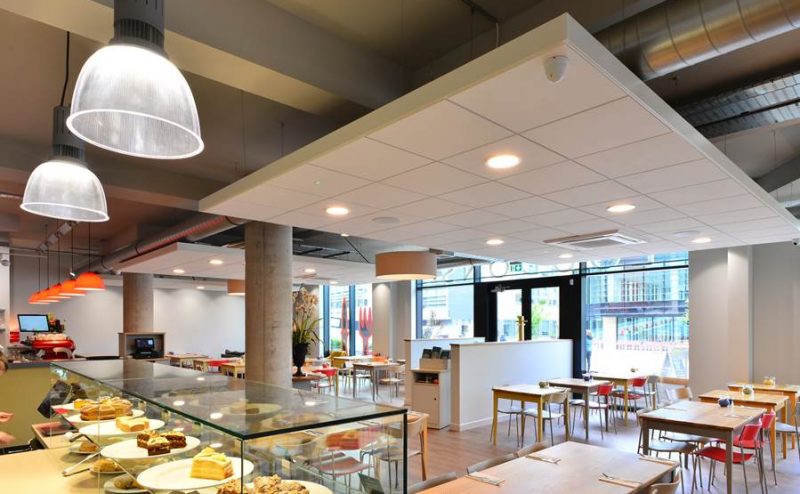
Space is a universal constraint, and with the UN projecting that 68% of the world’s population will live in urban areas by 2050, time is also constrained in how we make the most of the space available to us.
There’s little ‘new’ space to work with though. New buildings are judged on their environmental footprints, developments are bound by planning, and urban sprawl is prevented through green belt initiatives. Listed, heritage and historic buildings are protected from demolition or redevelopment.
One of the ways we can cope is simply by repurposing and recycling such spaces, through intelligent and sensitive modernisation, as well as by ‘upcycling’ them in ways that respect their past.
Here, Isabel Blanco, marketing communications manager for Armstrong Ceiling Solutions, addresses some key considerations.
Evolving the aesthetic
The trend towards open-plan, minimalist spaces is at odds with the smaller, more confined yet more ornate spaces of yesterday. So, when working with older buildings, the most striking consideration is retaining the visual style of the past while updating materials, technologies and functionality.
Whatever a heritage space is upcycled for, there is a distinct need to maximise light, indoor air quality and acoustics. Given the smaller window designs common in older buildings, integrating new ceiling technologies with high light reflectance and minimal VOC emissions can help retain aesthetics.
Highly light-reflective mineral tiles can help bathe interior spaces in natural light while maintaining comfortable temperatures and air quality without detracting from period features. Next-generation edge details create minimalist monolithic ceilings with no visible grid.
Safeguarding period aesthetics during a refurbishment can add complexity to installing the services to upgrade the building. Here it pays to think modular, for example, canopies. These address one common complaint about renovating older buildings: their small plenum spaces by maximising space beneath the ceiling.
Modernising the soundscape
The acoustic performance of period buildings is often inadequate and with noise pollution a clear threat to wellbeing, the construction industry has a responsibility to ensure that upcycling old spaces upgrades their soundscapes, inside and out.
From mixed-use developments to offices, each requires its own balance of acoustics. Getting that balance right should play a major role in the choice of ceiling systems.
This question of balance also extends to aesthetics, with the ideal situation perfectly blending form and function. Circular canopies deliver a contemporary look in interior spaces while concealing services and outdated features.
Making yesterday’s spaces fit for every day
Even the most ambitious upcycling project needs to be practicable, especially given the likely need to upgrade the building’s technical features. Ceilings should be easy to cut, manipulate and customise.
Mineral tiles are ideal – easy to replace, minimising downtime and lifecycle costs. This is especially pertinent where cleanliness is paramount, such as in healthcare. In such cases, mineral tiles can offer antimicrobial performance together with cleanability and resistance to disinfectants.
Downward demountable systems can also feature vector edge details ideal for monolithic ceilings. Given small plenum spaces, specifying this kind of system can reduce the risk of damage to essential features. It can also free up lettable space.
The cycle continues
Most older buildings were here long before LEED or BREEAM. Today however, every aspect of every space needs to consider sustainability. Whether that’s securing wellbeing through light, acoustic and thermal comfort, or factoring in recyclability, upcycling spaces means making them a more environmentally-conscious part of our ecosystem. Systems that are Cradle to Cradle Certified™ can add critical points to refurbishment and upcycling projects.
One day, every building will be re-purposed and re-used. There’s an opportunity lying in every space. It’s up to us to make the most of it.
To learn how Armstrong Ceiling Solutions can help you reimagine your spaces, visit www.armstrongceilingsolutions.co.uk.